
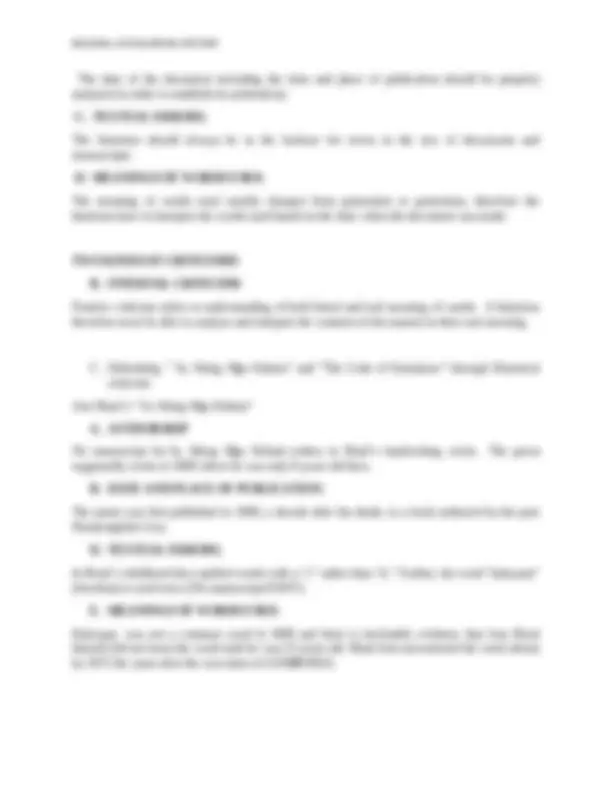
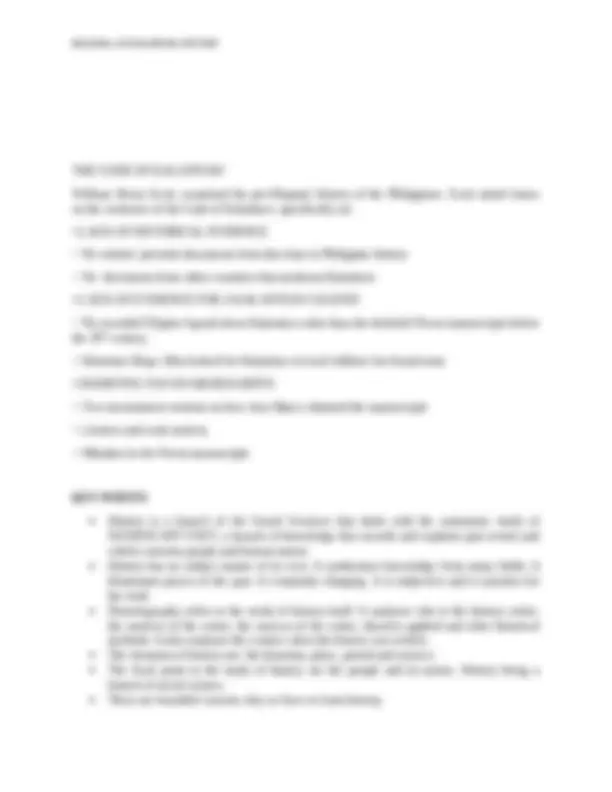
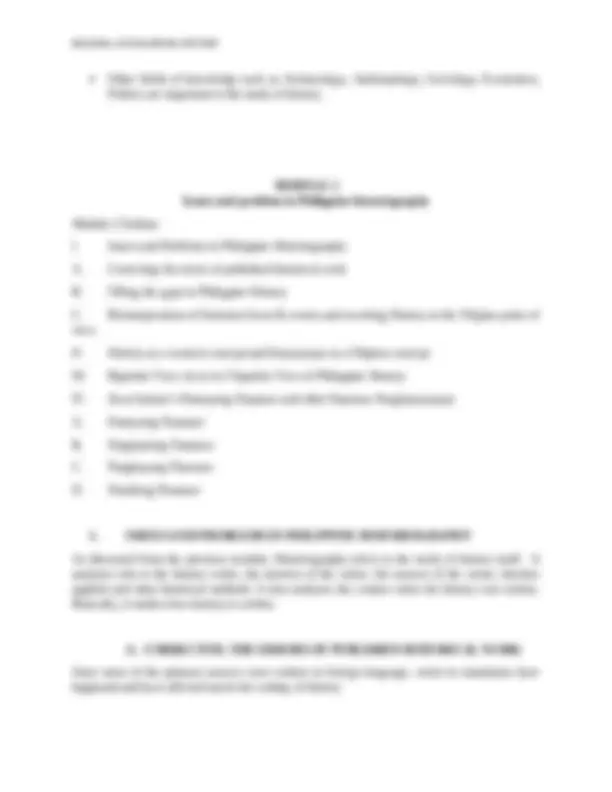
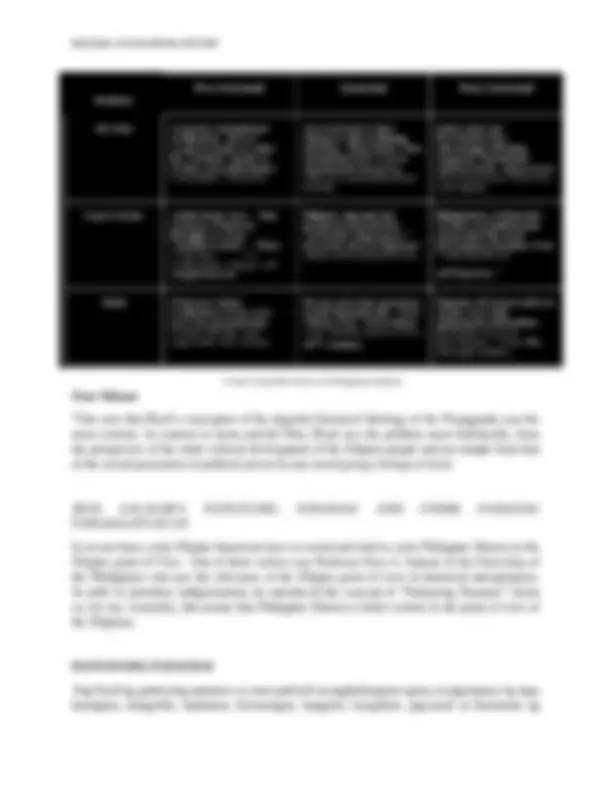
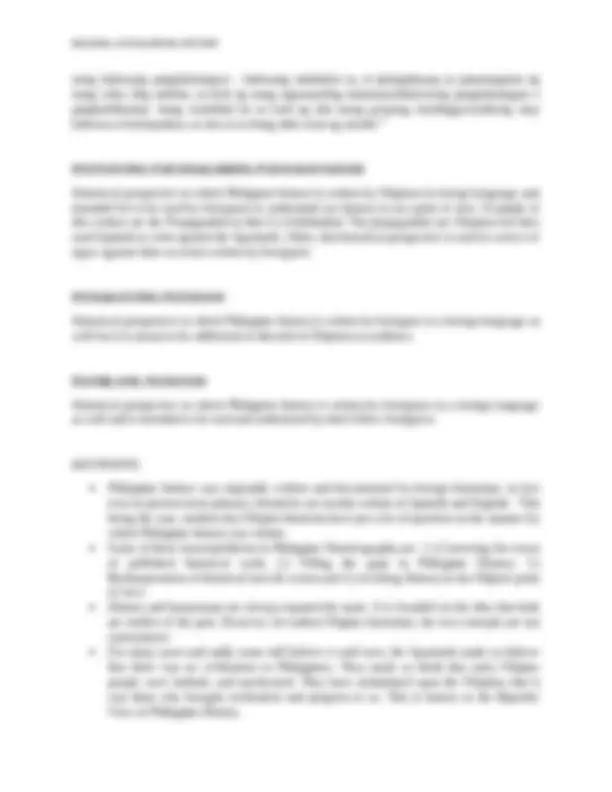
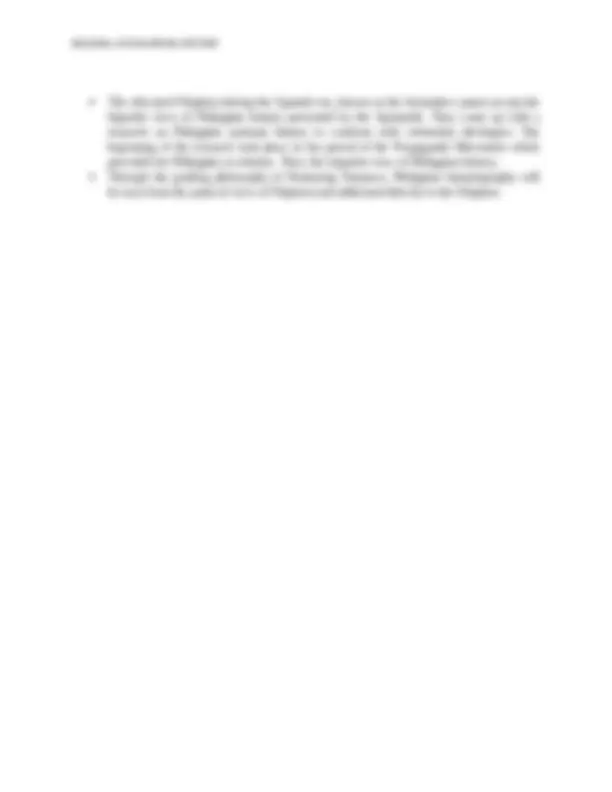


Study with the several resources on Docsity

Earn points by helping other students or get them with a premium plan


Prepare for your exams
Study with the several resources on Docsity

Earn points to download
Earn points by helping other students or get them with a premium plan
Community
Ask the community for help and clear up your study doubts
Discover the best universities in your country according to Docsity users
Free resources
Download our free guides on studying techniques, anxiety management strategies, and thesis advice from Docsity tutors
Hope it helps if it does please support.
Typology: Summaries
1 / 10

This page cannot be seen from the preview
Don't miss anything!







Under what circumstances do people take Certain actions, and in what circlumstances do They take surprising actions? ETYMOLOGY AND DEFINITION HISTORY (FROM THE GREEK WORD HISTORE OR HISTORIA WHICH MEANS LEARNING, INQUIRY AND OR INVESTIGATION) HISTORIOGRAPHY Refers to the study of history itself. Historiography analyzes who is the history writer, the motives of the writer, the sources or the writer, theories applied and other historical methods. ELEMENTS OF HISTORY
C. History illuminates pieces of the past History provides for explanations of things that happened in the past. IMPORTANCE OF THE STUDY OF HISTORY The Study Of History is important because it Provides us with the CAPACITY TO ANALYZE PREVIOUS EVENTS AND PHENOMENA which Therefore will provide us with proper basis on HOW TO VIEW THE PRESENT AND THE FUTURE. ACCORDING TO KENT ROGERS, WE STUDY HISTORY BECAUSE OF THE FOLLOWING: To know more about the roots of cur current culture. To learn about human nature by looking at trends that repeat through history and learn about mistakes of those who have gone before us. MODULE 1 INTRODUCTION TO HISTORY: Definition, Nature, Methodology and Importance HISTORICAL CRITICISM The historian’s role in writing history, to reiterate, is to provide meanings to facts that he gathered from primary sources (facts from manuscripts, documents) or those that have been gathered by archaeologists or anthropologists (artifacts). TWO KINDS OF CRITICISMS A. EXTERNAL CRITICISM The ‘External Criticism’ covers the physical examinations of sources like documents, manuscripts, books, pamphlets, maps, inscriptions and monuments. Elements that have to be taken into consideration in doing validation: A. AUTHORSHIP The name of the author of the document usually provides credence in the establishment of validity of a certain document. The author’s name in itself can provided for the test of authenticity. B. DATE AND PLACE OF PUBLICATION.
William Henry Scott, examined the pre-Hispanic history of the Philippines. Scott raised issues on the existence of the Code of Kalantiaw, specifically on:
No written/ pictorial documents from that time in Philippine history No documents from other countries that mentions Kalantiaw
No recorded Filipino legend about Kalantiaw other than the doubtful Pavon manuscripts before the 20th^ century. Historian Diego Alba looked for Kalantiaw in local folklore but found none
Two inconsistent versions on how Jose Marco obtained the manuscripts ( looters and cook stories) Mistakes in the Pavon manuscripts KEY POINTS History is a branch of the Social Sciences that deals with the systematic study of SIGNIFICANT PAST, a branch of knowledge that records and explains past events and which concerns people and human nature. History has no subject matter of its own. It synthesizes knowledge from many fields. It illuminates pieces of the past. It constantly changing. It is subjective and it searches for the truth. Historiography refers to the study of history itself. It analyzes who is the history writer, the motives of the writer, the sources of the writer, theories applied and other historical methods. It also analyzes the context when the history was written. The elements of history are: the historian, place, period and sources. The focal point in the study of history are the people and its nature. History being a branch of social science. There are bountiful reasons why we have to learn history.
Other fields of knowledge such as Archaeology, Anthropology, Sociology, Economics, Politics are important in the study of history. MODULE 2 Issues and problem in Philippine historiography Module 2 Outline: I. Issues and Problems in Philippine Historiography A. Correcting the errors of published historical work B. Filling the gaps in Philippine History C. Reinterpretation of historical facts & events and rewriting History in the Filipino point of view II. History as a western concept and Kasaysayan as a Filipino concept III. Bipartite View vis-à-vis Tripartite View of Philippine History IV. Zeus Salazar’s Pantayong Pananaw and other Pananaw Pangkasaysayan A. Pantayong Pananaw B. Pangkaming Pananaw C. Pangkayong Pananaw D. Pansilang Pananaw I. ISSUES AND PROBLEMS IN PHILIPPINE HISTORIOGRAPHY As discussed from the previous module, Historiography refers to the study of history itself. It analyzes who is the history writer, the motives of the writer, the sources of the writer, theories applied and other historical methods. It also analyzes the context when the history was written. Basically, it studies how history is written. A. CORRECTING THE ERRORS OF PUBLISHED HISTORICAL WORK Since most of the primary sources were written in foreign language, errors in translation have happened and have affected much the writing of history.
Kasaysayan, unlike history, is not only bound by written documents but as well as oral traditions like communal songs, legends, epics and the like as mentioned earlier were the prevalent modes on how the ancient Filipinos and most of the indigenous people who still exist up this day use as a mode of narrating their past and story. BIPARTITE VIEW VIS-À-VIS TRIPARTITE VIEW OF PHILIPPINE HISTORY Bipartite View of Philippine History For many years and sadly some still believe it until now, the Spaniards made us believe that there was no civilization in Philippines. They made us think that early Filipino people were barbaric and uneducated. They have assimilated upon the Filipinos that it was them who brought civilization and progress to us. This is known as the Bipartite View of Philippine History. “Pre-Hispanic period” Characterized as the time prior to the coming of the Spaniards where the condition of the Philippines is seen of uncivilized society and barbaric people. “Hispanic period” Characterized as time of the coming of the Spaniards seen as the advent of civilizing influences from them. Tripartite View of Philippine History The educated Filipinos during the Spanish era, known as the ilustrados cannot accept the bipartite view of Philippine history presented by the Spaniards. They come up with a research on Philippine national history to confront with colonialist ideologies. The beginning of the research took place in the period of the Propaganda Movement which preceded the Philippine revolution.
Zeus Salazar “One sees that Rizal’s conception of the tripartite historical ideology of the Propaganda was the most extreme. In contrast to Jaena and del Pilar, Rizal saw the problem more holistically, from the perspective of the entire cultural development of the Filipino people and not simple from that of the actual possession of political power by any social group, foreign or local. ZEUS SALAZAR’S PANTAYONG PANANAW AND OTHER PANANAW PANGKASAYSAYAN In recent times, truly Filipino historians have occurred and tried to write Philippine History in the Filipino point of View. One of these writers was Professor Zeus A. Salazar of the University of the Philippines who saw the relevance of the Filipino point of view in historical interpretation. In order to introduce indigenization, he introduced the concept of “Pantayong Pananaw” (from us, for us). Generally, this means that Philippine History is better written in the point of view of the Filipinos. PANTAYONG PANANAW Ang buod ng pantayong pananaw ay nasa panloob na pagkakaugnay-ugnay at paguugnay ng mga katangian, halagahin, kaalaman, karunungan, hangarin, kaugalian, pag-aasal at karanasan ng
The educated Filipinos during the Spanish era, known as the ilustrados cannot accept the bipartite view of Philippine history presented by the Spaniards. They come up with a research on Philippine national history to confront with colonialist ideologies. The beginning of the research took place in the period of the Propaganda Movement which preceded the Philippine revolution. Thus, the tripartite view of Philippine history. Through the guiding philosophy of Pantayong Pananaw, Philippine historiography will be seen from the point of view of Filipinos and addressed directly to the Filipinos.